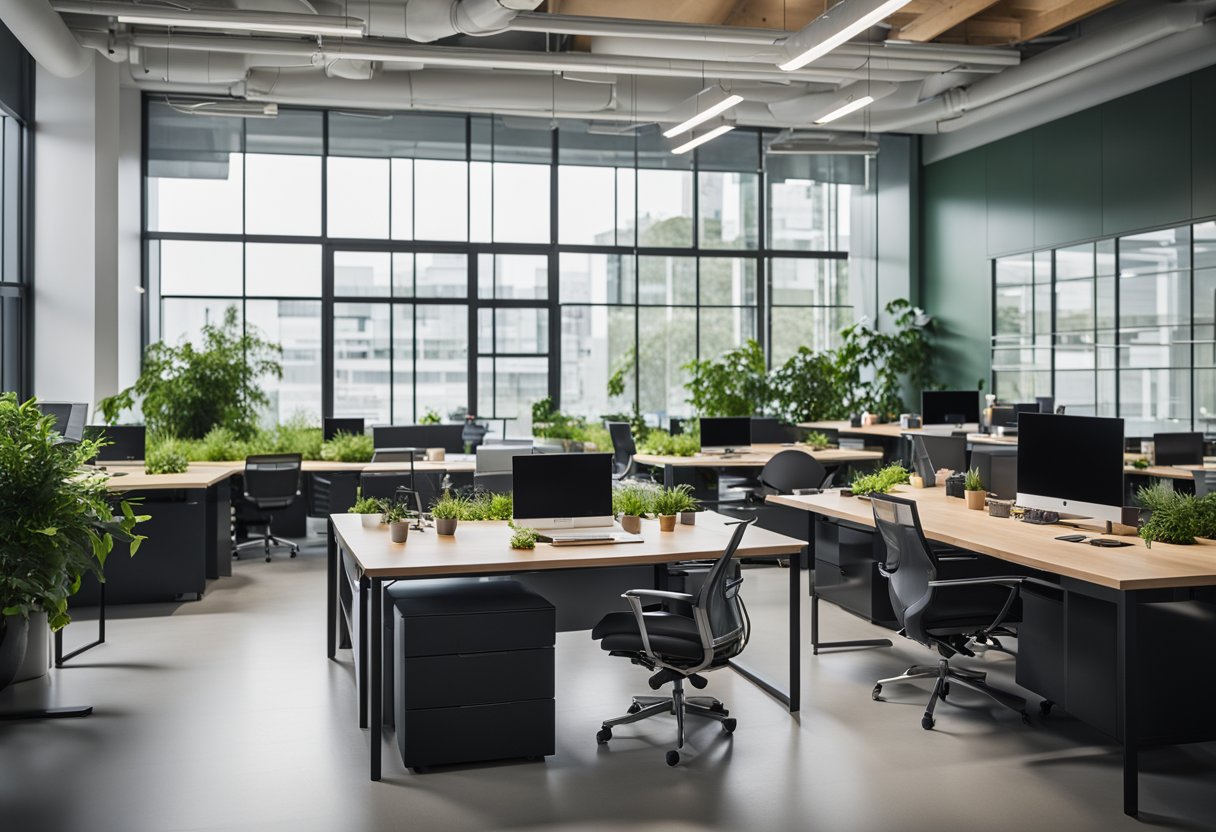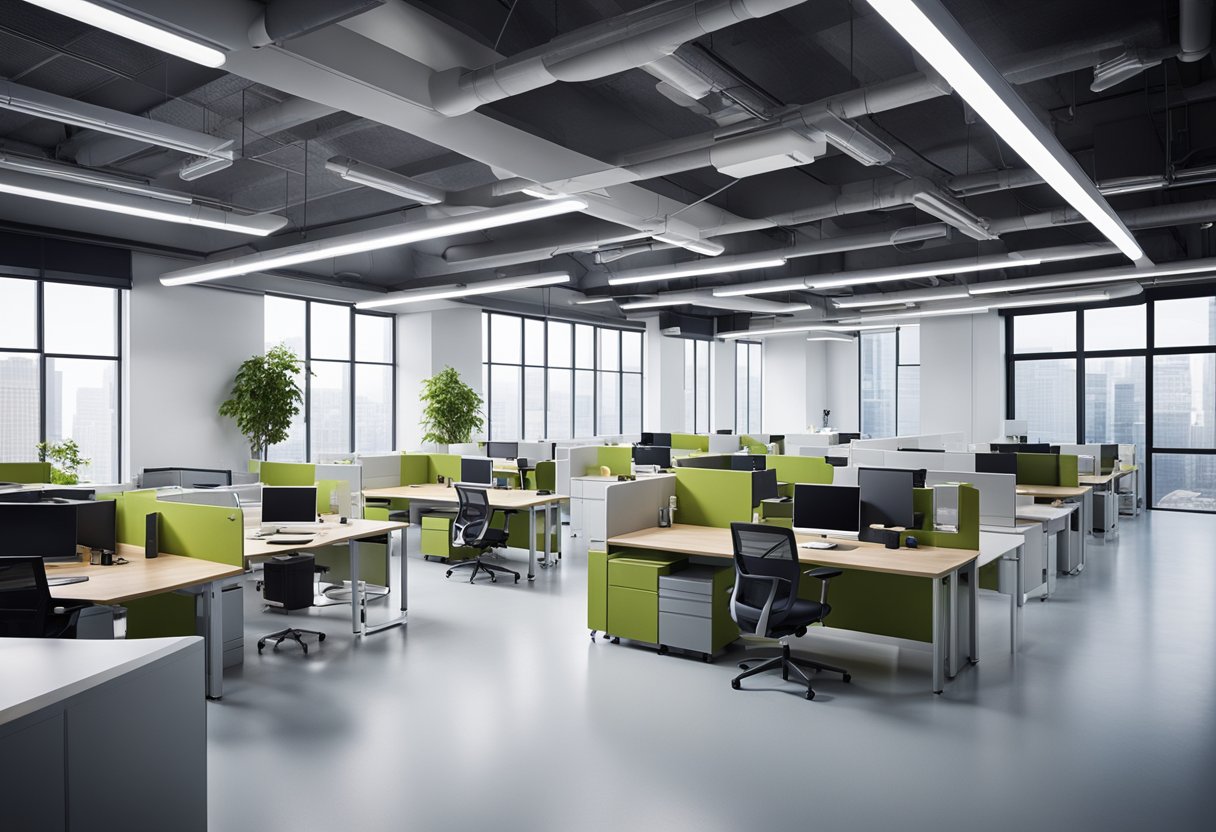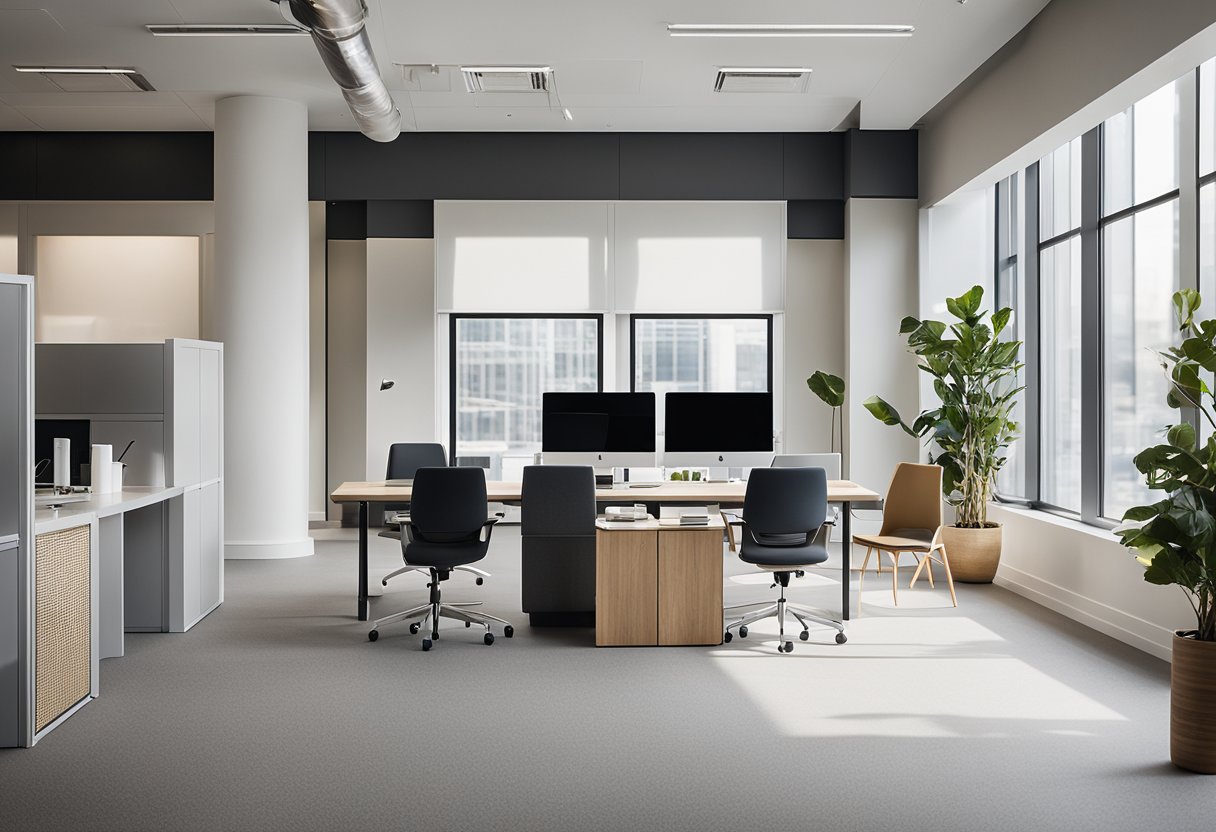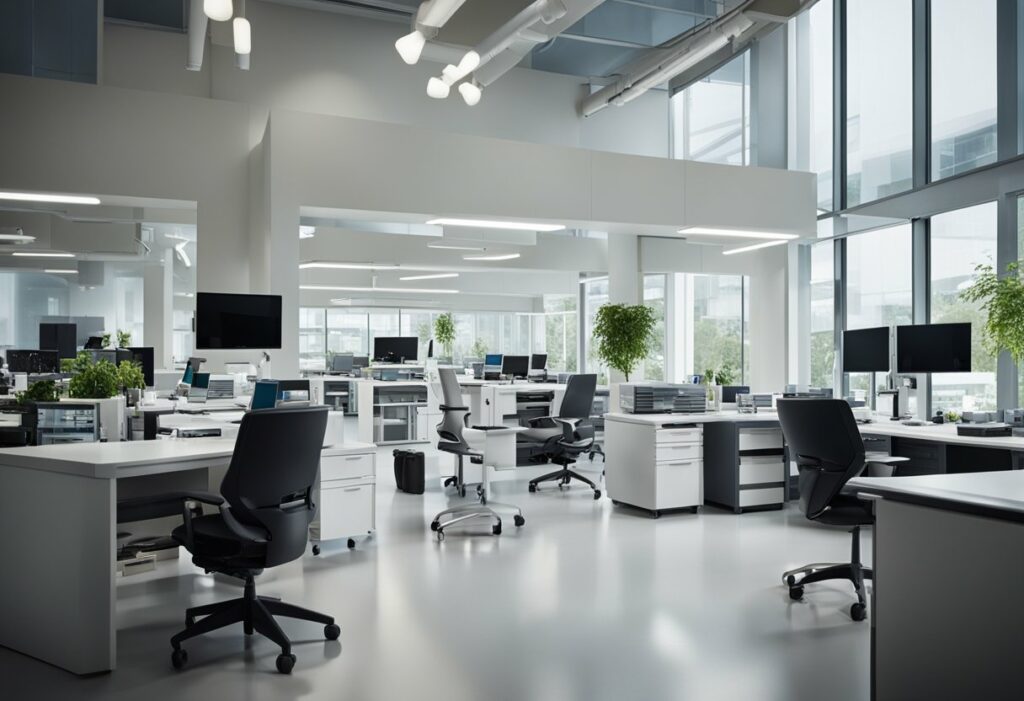Lab Office Design: Innovations for a Modern Workspace
Are you looking to design a lab office that encourages productivity, collaboration and creativity? If so, then you have come to the right place. Lab office design is a crucial aspect of creating an environment that is conducive to scientific research and development. The right lab office design can help you create a space that is functional, efficient and aesthetically pleasing.

Essentials of Lab Office Design Lab office design involves creating a space that is tailored to the specific needs of your team. This requires a deep understanding of the workflow, research goals, and equipment requirements of your team. The design should focus on creating a space that is flexible, adaptable and encourages collaboration. This includes creating an open-plan office, providing ample storage space, and ensuring that the space is well-lit and ventilated.
Lab Office Design Trends and Innovations Lab office design is a constantly evolving field, with new trends and innovations emerging all the time. Some of the latest trends in lab office design include the use of sustainable materials, the incorporation of biophilic design elements, and the use of smart technology to optimize energy efficiency. These trends are driven by the need to create spaces that are not only functional but also environmentally friendly and cost-effective.
Key Takeaways
- Lab office design is crucial for creating a space that is conducive to scientific research and development.
- The design should focus on creating a space that is flexible, adaptable and encourages collaboration.
- The latest trends in lab office design include the use of sustainable materials, biophilic design elements and smart technology.
Essentials of Lab Office Design

When designing a lab office, there are several key factors to consider to ensure that the space is functional, safe, and conducive to productivity. Here are some essential aspects to keep in mind:
Innovative Lab Layouts
Gone are the days of traditional, closed-off lab designs. Today, many labs are opting for more open, collaborative layouts that encourage creativity and teamwork. Consider incorporating modular design elements that allow for flexibility and easy reconfiguration.
Optimising for Safety and Compliance
Health and safety are of utmost importance in lab design. Ensure that your lab is compliant with all relevant regulations, and consider incorporating biosafety measures such as fume hoods and personal protective equipment (PPE) into your design.
Integrating Technology and Equipment
Lab equipment and technology are constantly evolving, and it’s important to design your lab with these advancements in mind. Consider incorporating virtual reality and other cutting-edge technologies to enhance your lab’s capabilities.
Sustainability and Energy Efficiency
Sustainability is becoming increasingly important in lab design. Consider incorporating green lab practices and energy-efficient technologies to reduce your lab’s environmental impact and save on energy costs.
Ergonomics and Accessibility
Your lab should be designed with the comfort and safety of your researchers in mind. Incorporate ergonomic design elements that promote good posture and reduce strain, and ensure that your lab is accessible to people with disabilities.
Cultivating a Collaborative Atmosphere
Collaboration is key to successful research, and your lab design should reflect this. Consider creating communal spaces where researchers can come together to brainstorm and collaborate.
Addressing the Needs of Researchers
Your lab should be designed with the specific needs of your researchers in mind. Consider the types of research being conducted and tailor your lab design accordingly.
Adapting to Organisational Growth
Your lab should be designed with growth in mind. Consider incorporating flexible design elements that can be easily adapted as your lab and organisation grow.
Utility Management and Infrastructure
Utility management and infrastructure are crucial aspects of lab design. Ensure that your lab has adequate power, water, and gas supplies, and consider incorporating features such as backup generators and redundant systems to ensure continuity of operations.
Personalising the Workspace
Your lab should reflect the personality and culture of your organisation. Consider incorporating design elements that reflect your company’s values and mission.
Architectural Considerations
The architectural design of your lab is an important aspect to consider. Work with experienced architects to ensure that your lab is optimally designed for functionality, productivity, and aesthetics.
Enhancing Productivity and Functionality
Your lab should be designed with productivity and functionality in mind. Consider incorporating workflow design elements that streamline processes and enhance efficiency.
Casework and Storage Solutions
Effective casework and storage solutions are essential to lab design. Ensure that your lab has adequate storage space for equipment, chemicals, and samples, and consider incorporating custom casework solutions that meet your lab’s specific needs.
Designing for Different Lab Types
Different types of labs have different design requirements. Consider the specific needs of wet labs, dry labs, microbiological labs, and other lab types when designing your lab space.
Fostering a Positive Lab Culture
A positive lab culture is essential to the success of your lab. Consider incorporating design elements that foster diversity, creativity, and collaboration, and ensure that your lab is a welcoming and inclusive space for all researchers.
By keeping these essential factors in mind, you can design a lab office that is safe, functional, and conducive to productivity and collaboration.
Lab Office Design Trends and Innovations

As we move into the future, lab office design is rapidly evolving to meet the needs of modern research. Here are some of the exciting trends and innovations that are shaping the future of lab office design.
The Rise of Smart Labs
With the advent of new technologies such as the Internet of Things (IoT), virtual reality (VR), and artificial intelligence (AI), labs are becoming smarter and more connected than ever before. Smart labs are designed to be highly flexible, allowing researchers to easily modify the layout and functionality of the space to suit their needs.
Modular and Adaptive Spaces
Modular design is becoming increasingly popular in lab office design, as it allows for greater flexibility and adaptability. Modular labs can be easily reconfigured to accommodate changing research needs, and can even be disassembled and moved to a new location if necessary.
Incorporating Nature and Wellbeing
Research has shown that exposure to nature can have a positive impact on our mental and physical wellbeing. Lab office designers are incorporating natural elements such as plants, natural light, and outdoor spaces to create a more calming and productive work environment.
Leveraging Collaborative Technologies
Collaboration is key to successful research, and lab office designers are incorporating technologies such as video conferencing, collaborative software, and shared workspaces to facilitate teamwork and communication.
Exploring New Materials and Finishes
Innovative materials and finishes are being used to create visually stunning lab office spaces. From high-tech metals and glass to warm wood finishes, lab office designers are exploring new ways to create functional and aesthetically pleasing work environments.
The Impact of Colour and Light
Colour and light can have a significant impact on our mood and productivity. Lab office designers are using colour and light to create stimulating and inspiring work environments that promote creativity and collaboration.
Embracing Diversity in Design
Lab office designers are recognising the importance of diversity in design, and are creating spaces that are inclusive and welcoming to people of all backgrounds and abilities.
The Future of Lab Office Spaces
The future of lab office design is exciting and full of possibilities. From virtual reality simulations to open labs that encourage collaborative research, the possibilities are endless.
Balancing Aesthetics and Functionality
Lab office designers are finding new ways to balance aesthetics and functionality, creating spaces that are both beautiful and practical.
The Role of Artificial Intelligence
Artificial intelligence is playing an increasingly important role in lab office design, from predictive modelling to automated lab equipment.
Creating Inclusive and Dynamic Environments
Lab office designers are creating environments that are both inclusive and dynamic, encouraging collaboration and creativity.
Advancements in Lab Safety Equipment
Health and safety is a top priority in lab office design, and designers are incorporating the latest safety equipment and protocols to ensure a safe work environment.
Eco-friendly Practices and Materials
Sustainability is also a key consideration in lab office design, with designers using eco-friendly materials and practices to reduce the environmental impact of labs.
Interactive and Immersive Experience Zones
Interactive and immersive experience zones are being used to create engaging and inspiring work environments that promote creativity and collaboration.
The Integration of Living Labs
Living labs are becoming increasingly popular in lab office design, allowing researchers to test and develop new products and services in a real-world environment.
Lab office design is constantly evolving, and these trends and innovations are just the beginning. By embracing new technologies, materials, and design principles, lab office designers are creating work environments that are both functional and inspiring.
Frequently Asked Questions

How can one optimise the use of space in a small laboratory office?
When designing a small laboratory office, it is essential to maximise the use of every inch of space. One effective strategy is to use modular furniture that can be easily configured to fit the available space. Additionally, you can consider using multi-functional furniture such as desks that can double as storage units. Another idea is to use vertical space by installing shelves and cabinets on walls to free up floor space.
What are the most innovative ideas for laboratory office design?
Innovation is key when it comes to laboratory office design. One of the most innovative ideas is to use a flexible layout that can be easily adjusted to accommodate different types of experiments. Another idea is to use customised lighting to create the perfect ambiance for different tasks. You can also incorporate natural elements such as plants to improve air quality and create a more pleasant working environment.
Where can I find inspiration for decorating a laboratory space?
There are several sources of inspiration for decorating a laboratory space. You can start by looking at design magazines, online blogs, and websites. You can also visit other laboratories to see how they have decorated their spaces. Another idea is to attend trade shows and conferences where you can see the latest trends and innovations in laboratory design.
What are the key considerations when planning a laboratory layout?
When planning a laboratory layout, there are several key considerations to keep in mind. These include safety, efficiency, and functionality. You need to ensure that the layout is safe for all users and that there is enough space for equipment and personnel to move around freely. Additionally, you need to ensure that the layout is efficient, with workstations and equipment placed in the most logical and convenient locations.
How should one approach the interior design of a modern laboratory?
When approaching the interior design of a modern laboratory, it is important to focus on functionality and efficiency. You need to ensure that the space is optimised for the specific needs of the laboratory, with workstations and equipment arranged in a logical and convenient manner. Additionally, you can incorporate elements of modern design such as clean lines, bold colours, and innovative lighting to create a space that is both functional and aesthetically pleasing.
Can you suggest some simple yet effective lab office design strategies?
One simple yet effective lab office design strategy is to use colour to create a more pleasant working environment. You can use bright colours to create a sense of energy and excitement, or muted colours to create a calming and relaxing atmosphere. Another strategy is to use natural elements such as plants to improve air quality and create a more pleasant working environment. Additionally, you can use customised lighting to create the perfect ambiance for different tasks.



